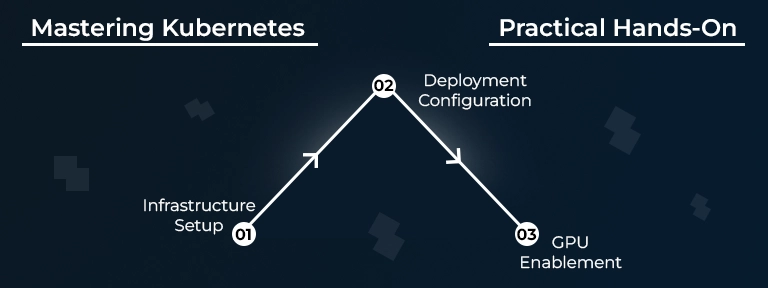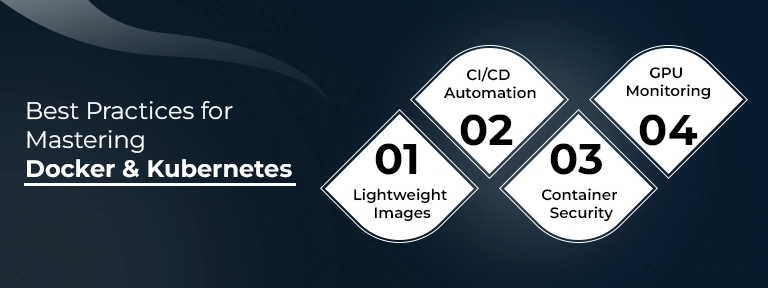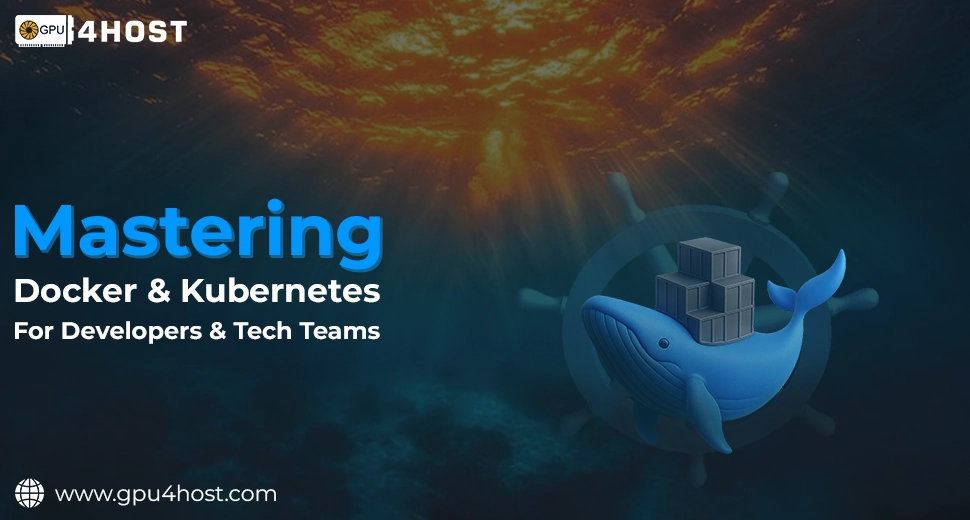Mastering Docker and Kubernetes: For Developers & Tech Teams
In the modern, quickly evolving tech era, mastering Docker and Kubernetes has become important for DevOps engineers, developers, and tech experts. Both of these containerization tools not only streamline the deployment process but also improve scalability, performance, and resource productivity, mainly when collaborating with advanced infrastructure such as a GPU server or an AI GPU cluster.
Even if you are deploying an AI image generator, working on different deep learning models along with Nvidia A100, or simply focusing on scaling all your microservices, this guide offers hands-on expertise to help you master both Docker and Kubernetes successfully.
What Are Docker & Kubernetes?
Docker: The Main Container Engine
Docker is a well-known platform that helps you package apps and their dependencies into fully lightweight, portable containers. Docker runs uniformly across any type of chosen environment, making both development and instant deployment regular.
- Real-World Use Case: You can containerize a PyTorch-powered AI image generator along with CUDA libraries for smooth deployment on any kind of GPU server.
Kubernetes: The Orchestrator
Kubernetes (generally shortened as K8s) is a completely open-source system that helps to automate the deployment, scaling, and management of different containerized apps.
- Real-World Use Case: Handling a GPU Cluster running many types of AI tasks, Kubernetes guarantees that every single container gets the ideal assets and can recover from failures automatically.
Key Kubernetes Concepts:
- Pod: The general unit that hosts containers.
- Node: A virtual machine or physical server that run different pods.
- Cluster: A group of nodes handled by Kubernetes.
- Deployment: Handles replica sets, rolling updates.
- Service: Exposes pods with the help of networking.
What Kubernetes Does for You:
- Automates maintenance, deployment, and scaling.
- Self-healing — restarts all failed containers.
- Allows zero-downtime deployments.
- Load balancing and enhanced resource distribution.
Mastering Kubernetes: Practical Hands-On

1. Automate Everything
Kubernetes takes complete care of container scaling, deployment, routine health checks, and proper load balancing—so you don’t have to. Even if you are handling 10 containers or 10,000, Kubernetes makes it efficient.
2. Achieve High Availability
Auto-restarts, self-healing, and replica management make sure that your services are always available and running, even if any node or container fails.
3. Boost DevOps & CI/CD
Add smoothly with Jenkins, GitOps, GitLab CI, and all other available tools to create powerful, constant deployment pipelines.
4. Cloud-Native and Hybrid Flexibility
Run Kubernetes on any specific cloud (like AWS, GCP) or on-premise configurations—even across different environments. Ideal for hybrid and multi-cloud tactics.
5. Perfect for Microservices Architecture
Rationalized handling of distributed microservices guarantees proper communication, scaling, and updates are managed with accuracy.
6. Industry-Driven and Future-Proof
Ranging from startups to worldwide enterprises, everyone is simply adopting Kubernetes. Mastery opens doors to popular DevOps, SRE, and cloud roles.
Learning Roadmap: Your Path to Mastery
Mastering Docker:
- Know about the right Docker architecture, images, and containers.
- Write and develop Dockerfiles and push essential images to Docker Hub.
- Utilize Docker Compose for multi-container environments.
- Handle container networks, volumes, and many more.
Hosting a Docker setup on GPU4Host’s flexible, GPU-based infrastructure helps you to easily train advanced models, run containers quickly, and scale services with reduced latency.
Real-World Applications Using Docker and Kubernetes
Here are some of the real-world GPU-intensive applications that tell about mastering Docker & Kubernetes:
1. AI and ML Model Training
- Utilize Docker to containerize ML-based models.
- Use Kubernetes to scale advanced training jobs across a specific GPU cluster.
- Quickly deploy models on a server with an Nvidia A100 for quicker training.
2. AI Image Generator Deployment
- Containerize generator models with the help of Docker.
- Scale different services using Kubernetes’ horizontal pod autoscaling.
- Run many inference nodes for simultaneous image generation.
3. SaaS Products on GPU Hosting
- Provide containerized microservices.
- Deploy on a GPU hosting services platform like GPU4HOST.
- Get an advantage from isolated environments and elastic scaling.
Best Practices for Mastering Docker & Kubernetes

1. Always Keep Your Images Light
- Utilize slim base images (python:3.10-slim).
- Remove unwanted files after the build.
2. Automate with CI/CD
- Try to go for GitHub Actions or GitLab pipelines to easily auto-build and deploy Docker images to Kubernetes.
3. Protect Your Containers
- Always scan all your available images for any type of vulnerabilities.
- Run as non-root wherever possible.
4. Check GPU Tasks
Utilize different tools such as Grafana, Prometheus, and NVIDIA DCGM Exporter to keep an eye on GPU metrics inside Kubernetes.
Tips for Developers Using GPU Infrastructure
If you are constantly working with AI/ML tasks or high-quality rendering applications:
- Select a service provider like GPU4HOST that provides:
- Multiple GPU dedicated server options
- Quick access to the Nvidia A100
- Pre-installed Docker and Kubernetes stacks
- Use GPU hosting to prevent any type of local hardware limitations.
- Develop scalable systems for AI-based model deployment and model training with Kubernetes’ autoscaling and failover features.
Conclusion: Mastering Docker & Kubernetes as Core Skills
In conclusion, Mastering Docker & Kubernetes is no longer a luxury—it’s one of the most important skills in modern DevOps, AI model development, and flexible app deployment. Even if you are containerizing a Python application, deploying an AI-based image generator, or handling tons of pods in a GPU cluster, these tools offer the foundation for quick, trustworthy, and future-ready software systems.
Always start small with Docker. Then go big with Kubernetes. And when performance is really necessary, always use it with GPU-based infrastructure from a well-known platform like GPU4HOST.


